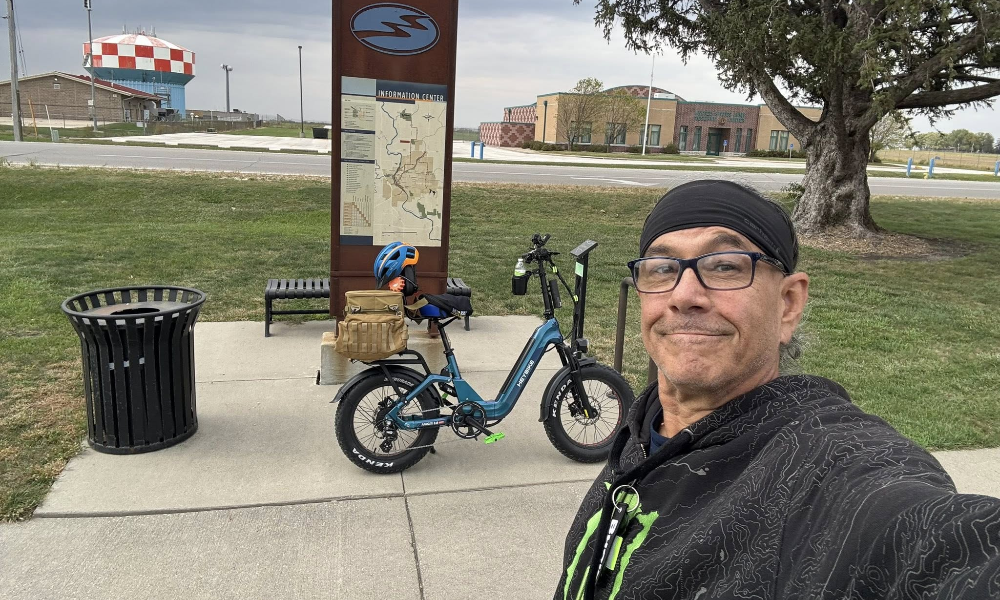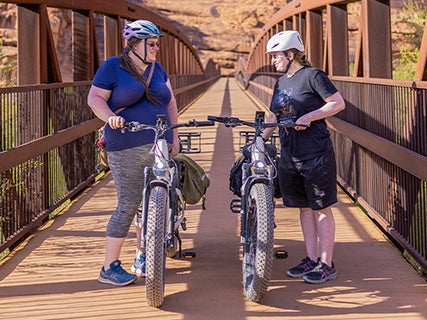Recognize that if you are new to the world of bike commuting, it might be a frightening concept — the traffic can be much worse during peak hours than on your Sunday morning trek!
We want you to feel as safe as possible and to make the most of your everyday travel. Here are some of our top bike commuting tips.
Top 7 Tips for Bike Commuting
1. Safety Check for Your Bike
Give your bike a thorough safety inspection if you already own one before attempting to ride it. Although most commuter and general transportation bikes are durable, if the bike is merely left sitting in your garage, several parts can eventually wear out or deteriorate.
It makes sense to double-check that everything has been set up properly even if your bike is fresh new, especially if you purchased it online. Safer to be safe than sorry.
2. Plan and Practice the Route Ahead of Time
Planning and riding your route before your first day of biking to work is a terrific approach to reducing any stress. Then you can download the route to your bike computer. The finest bike phone mounts are ideal for bike commuting if you do not already have one. While riding, you can use your phone to navigate.
We would advise choosing a longer route on more peaceful roads than a shorter one on busier ones. The journey should be as simple as feasible.
3. Gear Up for the Ride
We have an amazing range of equipment to make getting to work as simple as possible for you and your things, including racks, panniers, seat bags, backpacks, messenger bags, and more. Your choice of approach will depend on how much you need to bring. Seat packs are ideal for carrying minor items like a spare tube, tools, a wallet, and a thin shell.
A backpack or messenger bag may be the better option if you need to carry more. They are ideal for transporting small items like a change of clothing and lunch.
Consider outfitting your bike with a rack and panniers (pannier racks) if your commute is very long or if you need to bring more than a backpack's worth of items.
FURTHER READING: 4 Best Electric Commuter Ebikes
4. Make Yourself Visible
Another bike commuter tip is to make yourself visible. Regular bikers do not need to be reminded to maintain visibility. Look around for a generator that will generate electricity from the energy of your spinning wheel if you are sick of having to frequently recharge the batteries in the lights or concerned that they will run out on the way home. Although it will reduce your performance a little, it will allow you to generate power for your lights by pedaling.
5. Knowing the Rules of the Road
Refresh your knowledge of local legislation and fundamental bike safety techniques if necessary. Here are a few basic traffic laws for commuters on bikes:
- Ride on the road; avoid using the sidewalk.
- Do not ride against the flow of traffic.
- As you would in a car, stop at stop signs and traffic lights.
- Make eye contact with riders, especially when they are going right or left at intersections. Even if you have the right of way, do not assume they can see you.
- Avoid hugging the curb. Make room for yourself to move.
- Keep an eye out for vehicles leaving driveways, side streets, and alleys.
- Avoid turning off to avoid parked cars on roads. Keep your path straight. Be alert for revolving car doors.
- If you intend to pass another cyclist or a pedestrian, give them a verbal warning or sound a bell. Never pass on the right, always on the left.
- To let people know that you are turning or stopping, use hand indications.
- Be predictable and ride with assurance.
6. Communicate with Drivers
While we recommend using segregated cycle lanes wherever possible for bike commuting (when done correctly, they make for a delightfully stress-free experience), most cyclists will eventually need to travel on the road.
It is crucial to make frequent eye contact and use unambiguous hand signals when speaking to riders. It is safer to presume a rider has not noticed you if you can not make eye contact with them, and you should respond accordingly.
7. Lock Your Bike Properly
Even the least noticeable commuter bike is vulnerable to theft. Let the clerk at the bike shop select a lock that is both thin and somewhat durable. You can eliminate the need to carry a lock by leaving a large, strong bike lock fastened around the pole or railing if you utilize the same location to store your bike daily.
FURTHER READING: How to Properly Lock Your Bike
Conclusion
We hope that the tips for bike commuters have made you feel better equipped for your daily commute; once you become comfortable driving, there is no denying that riding a bike to work is the most enjoyable mode of transportation.



Share:
How to Bike Riding with Your Dog Safely?
What's Carbon Fiber Bike Frame